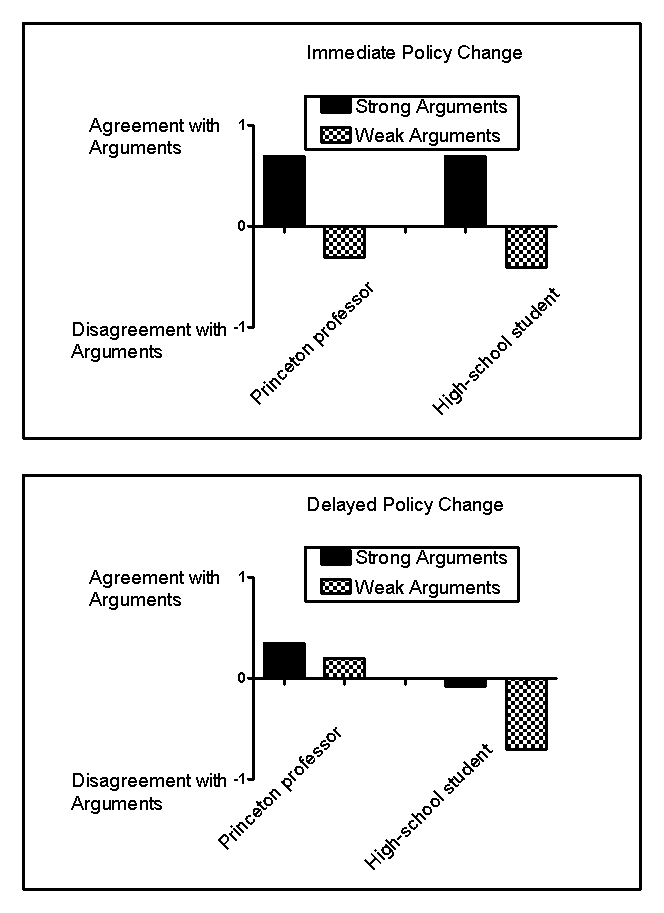Use the following to answer questions
Scenario II
The following scenario contains fabricated results consistent with the following study:
Petty,R.E. ,Cacioppo,J.T. ,& Goldman,R.(1981) .Personal involvement as a determinant of argument-based persuasion.Journal of Personality and Social Psychology,41,847-855.
Every day,consumers are exposed to scientifically based sales,marketing,and public relations strategies designed to influence purchasing decisions,change opinions,or win votes.One common sales strategy is the foot-in-the-door technique,a method that involves first making a smaller request that consumers are likely to grant and then following it with a larger request.Another common strategy is the door-in-the-face technique,which involves making an unreasonably large request that consumers will reject and then following it with a smaller request.When persuasion is necessary,it usually takes one of two forms: heuristic persuasion,which involves an appeal to habits or emotion,and systematic persuasion,which involves an appeal to facts and reason.Often,people will rely more on heuristics-simple shortcuts or "rules of thumb"-to make decisions instead of systematically weighing the evidence.
Petty and colleagues (1981) investigated some of these techniques in college students listening to arguments in favor of their college requiring an institution-level comprehensive final examination for graduation.Some students were led to believe that,if adopted,this policy would take place right away,and some were led to believe that the change would take place in a decade.In addition,some of the students were led to believe that they were listening to an argument from a Princeton professor,and others were led to believe that they were listening to an argument from a high-school student.Finally,some students heard strong arguments in favor of the policy,and some heard weak arguments.Thus,the experiment arranged six groups of students.For example,one group of students heard strong arguments from a high-school student about a far-removed policy change.Figure 13.1 shows fabricated results illustrating the major findings of this experiment.
Figure 13.1 
-(Scenario II) In the Petty and colleagues (1981) experiment,the purpose of manipulating the time that the policy would go into effect was to:
Definitions:
Voluntary Act
An action undertaken by an individual or entity out of free will without coercive influences.
Liquidation
The process of converting assets into cash or cash equivalents by selling them, often associated with dissolving a company or paying off debts.
Capital Account
A financial statement that shows the changes in a company's equity throughout a specific period due to various business activities.
Capital Deficiency
A situation where a company's liabilities exceed its assets, indicating potential financial distress.
Q8: Gosling (1998)arranged for human observers to observe
Q11: People generally are happiest in relationships when
Q14: Most researchers using factor analysis agree that
Q16: Introverts prefer quiet activities because their reticular
Q26: The Big Five dimensions of personality are
Q60: When participants in Steele and Aronson's study
Q65: _ involves changing your life circumstances as
Q103: The DSM-5 lists _ personality disorders.<br>A)5<br>B)10<br>C)15<br>D)20
Q189: Recent studies suggest that NSSI:<br>A)allows individuals with
Q223: At noon,Eliza ate the second-to-last piece of